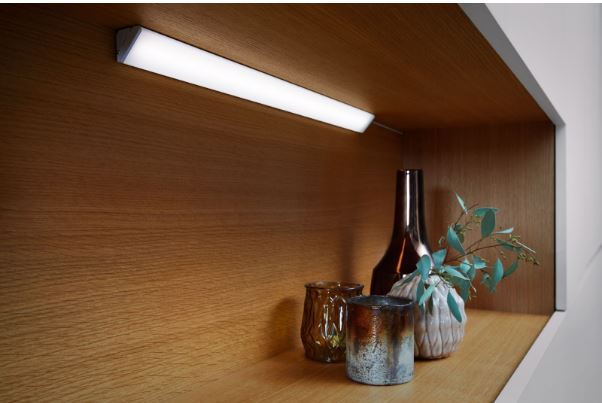Proper lighting transforms a room from ordinary to extraordinary. While general illumination is essential, adding layers of task and accent lighting creates a more functional and inviting space. One of the most versatile upgrades for enhancing both aesthetics and practicality is under-cabinet lighting.
Whether in kitchens, bathrooms, or workshops, under-cabinet lighting eliminates shadows, highlights work surfaces, and elevates the room's ambiance. This guide explores the benefits, options, and installation tips to help you brighten up your
space effectively.What Is Under-Cabinet Lighting?
Under-cabinet lighting involves installing fixtures beneath cabinets to illuminate the workspace below, offering a practical and stylish solution that enhances visibility and highlights architectural features. Its key benefits include improved task lighting for activities like chopping vegetables or reading recipes, effective shadow elimination on countertops, energy efficiency through LED options, and a sleek, modern appeal that adds a contemporary touch to any room.

Types of Under-Cabinet Lighting
Tape lights are best for creating subtle accents and navigating uneven surfaces. They are flexible, easy to install, and can be customized for length, making them ideal for shelves, display cases, or minimalist kitchen setups. However, they tend to offer lower brightness compared to other options and may cause glare on reflective surfaces like granite countertops.
Puck lights are an excellent choice for focused task lighting and small spaces. Compact and easy to mount, they deliver concentrated light, making them ideal for spotlighting specific areas or decorative highlights. While effective, careful spacing is required to avoid bright spots that can disrupt the visual flow.
Light bars are designed for continuous and even illumination, offering high brightness and a sleek design. They can be easily linked to cover larger areas, making them a favorite for kitchen counters or workbenches where consistent lighting is essential. While their installation may require more effort, the result is a clean and professional look that complements modern interiors.
How to Choose the Right Under-Cabinet Lighting
Selecting the perfect under-cabinet lights involves considering these factors:
Space Availability: Measure your cabinet dimensions to ensure the lights fit seamlessly. Light bars are ideal for long counters, while puck lights work for smaller areas.
Power Options: Choose between plug-in, battery-operated, or hardwired fixtures based on your layout and preferences. Hardwired installations offer a clean look but may require professional help.
Color Temperature: Warm tones (2700k–3000K) create a cozy vibe, while cool tones (4000–5000K) enhance focus and productivity.
CRI Rating: Opt for a high Color Rendering Index (CRI) to ensure accurate color representation, especially in kitchens and art spaces.
Why Choose LED for Under-Cabinet Lighting?
LED technology has revolutionized under-cabinet lighting by offering unmatched efficiency, longevity, and versatility. Using up to 80% less energy than traditional bulbs, LEDs provide significant energy savings while delivering ample brightness. Their impressive lifespan, often exceeding 25,000 hours, minimizes the hassle of frequent replacements, making them a reliable long-term choice. Additionally, LEDs cater to modern lighting needs with customizable options like dimmable features and smart controls, allowing you to create the perfect ambiance for any space.
Installation Tips for Under-Cabinet Lighting
Plan Ahead: Map out your power sources and fixture placements.
Follow Manufacturer Guidelines: Tape lights must be cut only at designated points to avoid damage.
Hide Wires: Use cable management solutions for a clean finish.
Test Before Final Installation: Temporarily position the lights to check brightness and placement.
Elevate Your Space with Under-Cabinet Lighting
Under-cabinet lighting offers more than illumination—it’s an opportunity to enhance your space's functionality and style. Whether you're renovating or upgrading, this simple yet impactful addition can transform kitchens, bathrooms, and beyond into well-lit, modern spaces. Explore LED options and installation ideas today to bring brighter, safer, and more efficient lighting to your home or workspace.



